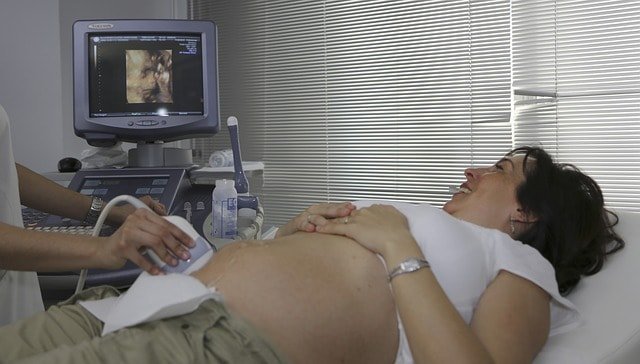 Some females when they get pregnant want to keep the gender of the baby a secret, from themselves and from their families. They want to experience the excitement of the baby being born and the doctor saying, “it’s a boy/girl”.
Some females when they get pregnant want to keep the gender of the baby a secret, from themselves and from their families. They want to experience the excitement of the baby being born and the doctor saying, “it’s a boy/girl”.
Others want to know and want to plan out their nurseries in what many consider gender-specific colors or themes such as princesses or sports (and this is not against those who do not like giving stereotypical gender roles but to each their own), and they want to plan the names as well.
On the other hand, some parents prefer knowing the gender of the baby so they can plan ahead. They prefer spending time deciding color schemes for the upcoming baby’s room, spend days thinking about naming their child and deciding future carriers for him or her.
Generally, finding out what gender your child is limited to the blood work at about 10 weeks, or the scan at about 18 weeks.
These are reliable times when you can determine what the baby is (however ultrasounds have known to be wrong).
But there is a method or theory out there that claims to be able to determine the gender of the baby from the first ultrasound at about 6 weeks.
The Ramzi Method
According to the Ramzi method, you can predict a child’s gender at the first ultrasound just by looking at the pictures.
The theory stated that the placement of the placenta determines gender. If it’s on the right side it’s supposedly a boy and the left side it’s a girl[1].
They claim that this is important as a “soft” marker that can help parents decide if they need a more reliable test to determine gender of baby and screen for gender-specific diseases[2].
Read on for if the theory is accurate enough though to trust.
If you are going to try the method there are a few tips when you go for your ultrasound. Ramzi used a color flow doppler which is necessary to produce an accurate result[3].
But some also ask if the pictures that we see are mirror images. Which side is really the left and the right and what was Ramzi seeing, but they said based on information and marker around they should be able to determine the actual orientation[4].
And if you aren’t sure, upload your ultrasound photo to a multitude of sites and they will gladly look at the photo (or multiple photos), analyze and let you know what they think of the gender based on the Ramzi method.
How it Originated
Everything starts with some form of research, and this theory came from a Dr. Saad Ramzi Ismail, in a 2011 paper on ObGyn.net.
However, there is no concrete evidence that shows where he is affiliated with, what kind of doctor he is, etc. So the information is not concrete.
According to the research, the theory was right 98 to 99 percent of the time.
They said that they tested 5,000 women and the same doctor did all of the exams as well, although some women had a transvaginal and some had transabdominal ultrasounds[5].
Is It Accurate?
Well, that depends on who you ask. Moms who have gotten it right will swear by it. Others will not.
According to Baby Center, the experts consider the Ramzi method nothing more than a hoax and that it’s similar to probability[6]. There is a 50/50 chance of being right.
The research did try to match the theory came back showing there was no relationship between the placenta’s location and the gender of the child. And this research was posted in the Ultrasound in Obstetrics & Gynecology[7].
The original “study” has never been replicated, so that speaks to its accuracy. So if you want to try it, go for it and have fun with it, because that’s part of pregnancy.
People will tell you oh you’re sitting in the back it’s a girl, you’re all belly it’s a boy (I could have that backward). Some talk about their dreams and what they see and that they know it’s a boy or a girl. Have fun with it until you can absolutely know.
Other Ways to Determine Sex
If you really want to know the sex of baby earlier rather than later there are a few ways that have been tried and found to be accurate, such as the noninvasive prenatal testing, which can be done at 10 weeks to determine any genetic conditions and it’s found to be 99 percent accurate[8].
There’s also the chorionic villus sampling (CVS) done at 10-13 weeks and an amniocentesis done between 16-20 weeks. Now the later two do hold the risk of miscarriage so take all of that into account by doing your research.
So again, have fun with the methods until you find out what you are having with proven methods.
References
- Baby Center. The Ramzi Theory: Does it Work? [link]
- Robin Elise Weiss, Ph.D. via Very Well Family. Ramzi’s Method for Determining Baby’s Sex. [link]
- The Gender Experts. The Ramzi Theory Explained. [link]
- See above #1
- See above #2
- See above #1
- See above #8
- Practice Bulletin No. 163: Screening for Fetal Aneuploidy [link]
Image: Pixabay



